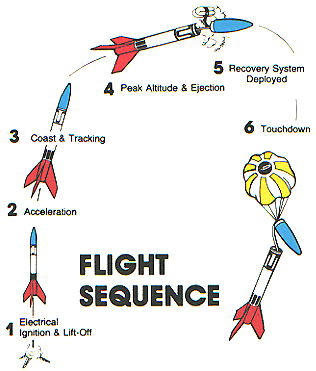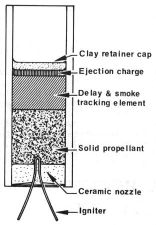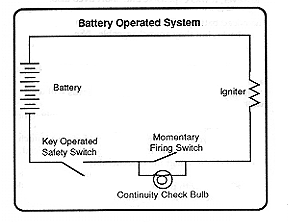|
Menú Principal
 ListaConquis ListaConquis
 ListaClubes ListaClubes
 Ayuda Ayuda
 Ideales Ideales
 Emblemas Emblemas
 Uniforme Uniforme
 Historia Historia
 Clases Clases
 Especialidades Especialidades
 Música Música
 Recursos Niños Recursos Niños
 Descargas Descargas
 Instrucciones Instrucciones
 Capellania Capellania
 Consejeria Consejeria
 Sábado Sábado
 Salud Salud
 Arte Acampar Arte Acampar
 Eventos Eventos
 Act. Sociales Act. Sociales
 ConquistARTE ConquistARTE
 NotiConquis NotiConquis
 Links Links
 Contactenos Contactenos
 Libro Visitas Libro Visitas
 Encuestas Encuestas
 F O R O F O R O
 Autor Autor

| Cohemodelismo 
- Conocer y explicar el Código de Seguridad relativo al Cohetemodelismo.
CÓDIGO DE SEGURIDAD DEL COHETEMODELISMO
- CONSTRUCCIÓN: Los modelos de cohetes se deben hacer solo de materiales livianos, como ser papel, madera, plástico y placas metálicas delgadas, con la excepción de los soportes de carga y de motores, que deben ser de un material semejante al alambre.
- MOTORES: Se deben usar solo motores comprados y ya cargados, y hay que usarlos siguiendo estrictamente las instrucciones del fabricante. No se los debe cambiar por ningún motivo, ni intentar recargarlos.
- RECUPERACION: Hay que usar siempre con los modelos de cohetes sistemas de recuperación que los traigan de vuelta a tierra con seguridad, de manera que se los pueda lanzar de nuevo.
- LIMITES DE PESO: Los modelos de cohetes no pesarán más de 113 gramos de carga propulsora.
- ESTABILIDAD: Revisaré la estabilidad de los cohetes antes de su primer vuelo, excepto cuando se lancen modelos de stabilidad ya probada.
- SISTEMA DE LANZAMIENTO: El sistema de lanzamiento de los modelos de cohetes que usaré serán de funcionamiento eléctrico y a control remoto, y contendrán una llave que vuelva a la posición "Off" cuando sea liberada.Permaneceré a por lo menos tres metros de cualquier cohete que será lanzado.
- SEGURIDAD EN EL LANZAMIENTO : No permanecere que nadie se acerque al cohete que está por lanzarse hasta que esté seguro que se ha quitado la llave de seguridad o que se ha desconectado la bateria de mi lanzador.
- CONDICIONES DE VUELO : No lanzaré cohetes si hay si hay viento fuerte, ni cerca de edificios, de cables de electricidad, de árboles altos, de aviones que vuelen bajo, o en cualquier otra condición que pueda ser peligrosa para las personas o para la propiedad.
- ZONA DE LANZAMIENTO : Siempre lanzaré los modelos de cohetes desde una zona despejada, libre de materiales de combustión rápida, y usaré relleno no inflamable para la recupreación de mis cohetes.
- DEFLECTORES : Mi sistema de lanzamiento tendrá deflectores para que los gases de propulsión no golpeen directamente el suelo.
- VARA DE LANZAMIENTO: Para evitar daños a los ojos, siempre ubicaré el sistema de lanzamiento de modo que el extremo de la vara de lanzamiento esté por encima del nivel de los ojos, o cubriré el extremo de la vara con mi mano cuando me acerque a ella. Nunca pondré mi cabeza o mi cuerpo por sobre la vara de lanzamiento. Cuando mi sistema de lanzamiento no esté en uso, siempre lo guardaré de modo que la vara de lanzamiento no esté en posición vertical.
- CABLES ELÉCTRICOS : Nunca intentaré recuperar un cohete que se haya enredado en un cable de electricidad o se encuentre en otros lugares peligrosos.
- ANGULOS DE LANZAMIENTO : No lanzaré cohetes de manera tal que el curso de su vuelo los lleve a chocar con blancos que están en el suelo, ni usaré cabezas explosivas ni cargas que sean inflamables. Mi sistema de lanzamiento siempre estará apuntando dentro de 30° de la vertical.
- PRUEBA DE PRE-LANZAMIENTO : Cuando realice actividades de investigación con diseños o métodos no probados, determinante, en la medida de lo posible, su confiabilidad con pruebas previas de lanzamiento.Lanzaré cohetes de diseño no probado en compelto aislamiento sin la presencia de personas que no estén involucradas directamente en el lanzamiento.
- Conocer y explicar la importancia de los componenetes básicos de un modelo de cohete.
- Body tube - The main body of the rocket and/or payload section.
- Fins - We all know what fins are, the reason for them is to move the center of pressure (CP) toward the bottom of the rocket. Thus making it more stable.
- Nose cone - Rounded or pointed cap that attaches to the top of the body tube to make the rocket more aerodynamic.
- Recovery system - A system that deploys at engine burn out to assist in slowing the rockets return to earth.
- Engine mount - The engine mount serves two purposes. First it holds the engine firmly in place, usually with a metal clip attached to the side of the engine tube. Secondly it centers the engine inside the body tube which is typically larger than the diameter of the engine.
- Launch lug - This eighth inch diameter tube attached to the side of the body tube. The launch lug guides the rocket up the lauch rod keeping the rockets trajectory straight until the rocket builds up enough speed that the fins can effectively guide it.
- Dibujar lo siguiente:
- Pasos que se dan para hacer volar un cohete.

(de Estes Industries) - Corte del motor de un modelo de cohete, con indicación de los nombres de cada una de las partes.

(de Estes Industries) - Plano esquemático de una plataforma de lanzamiento sencilla, usando los símbolos eléctricos correspondientes.

(de North Coast Rocketry)
Definir los siguientes términos:- Acolchado
PropulsoresVálvula de explosiónApogeoCarga posibleCentro de gravedadCentro de presiónImpulsoVelocidadExpulsiónNombrar y describir por lo menos cuatro sistemas diferentes de recuperación de cohetes. A partir de un equipo comprado, construir y pintar un cohete de una sola etapa, que tenga una longitud mínima de 15 a 20 cm. Lanzar con éxito el cohete, provisto de un paracaidas de recuperación. Define the following: - Wadding - flame resistant material that is placed in the body tube between the engine and the recovery system to protect it from the hot ejection gasses.
- Boost Gliders - A vehicle that is launched like a rocket and returns like a glider.
- Stall - If a boost glider slows to a speed at which it can not produce enough lift to keep it gliding.
- Payload - An item placed in a special, protected, section of the rocket as an experiment or to record data. Such as an egg, camera, or altimeter.
- Apogee - The highest point in along the flight path of a model rocket.
- Center of Gravity - The point, around which, the rocket is balanced.
- Center of Pressure - The point at which the surface area on either side of is equal. This point must be lower on the rocket than the center of gravity if the rocket is to be stable. (This is why fins are attached to the bottom of the rocket.)
- Impulse - A measure of force over a period of time. The power of a rocket engine is measured in total impulse.
- Velocity - The speed (and to be technically correct, the direction of travel) of an object (such as a rocket).
- Ejection - The force created when the engines fuel is expended and a charge is detonated in the top of the rocket engine. This force is what activiates the recovery system.
Name and describe at least four different recovery systems. - Parachute - Do we really need to explain parachutes?
- Streamer - This recovery system deploys like a parachute. However, it consists of a strip of material, usually crepe paper, about 2 inches wide and as long as you want to make it. It slows the rockets return to earth just enough to keep it from breaking into more than a few pieces.
- Boost Glide - This is a real challenge! The idea is to make a rocket that comes down like a glider. Basically, you take a glider and put a rocket engine in it. when it takes off, it instantly breaks into millions of pieces that flutter to earth harmlessly.
- Tumble Recovery - The idea here is to make a rocket that is stable going up, become unstable as it starts to come down. I have seen this can be accomplished two ways. First, by shifting the position of the engine backwards, bringing the CG back and making the rocket unstable. Estes used to have a kit that did this (they also used to have kits that simple ejected the engine out of the rocket, the rocket fluttered down harmlessly as everybody tried to dodge the falling engine). The second method involves having the rocket separate into two parts, neither of which is stable. Both halves flutter down harmlessly. Usually at least one of these parts can be found.
- Helicopter - Almost as self explainitary as parachute recovery. Helecopter blades are somehow attached to the sides of the rocket or pop out of the body tube and the rocket twirls down slowly.
- Others - There are probably other, even less reliable, methods of recovery. Let me know if you have any other ideas.
From a kit, build, finish, and paint a single-stage rocket that has a minium length of six inches with a recovery system, such as a parachute or streamer. Successfully launch and recover the rocket with the recovery system deploying properly. - You're on your own here. Good Luck! Unless you built rockets when you were young, the Pathfinders will probably be showing you how to put these things together.
www.conquismania.cl |




